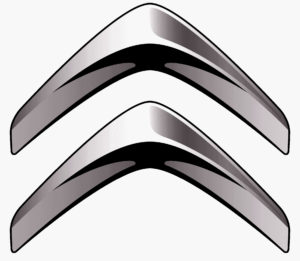The Goddess – 1955 to 1975
Back to 1955. The 2CV was a success, De Gaulle’s France was almost recovered from the war, and the Traction Avant was aging.

Citroën managed to repeat the Traction’s innovation, with the technological tour de force that was the DS (pronounced Déesse – the Goddess). It featured a semi-automatic gearbox, fully-powered disc brakes, powered steering and oleopneumatic suspension, which used gas and fluid as the springs. All of this was clothed in a highly aerodynamic body far in advance of anything else available for many years after. For those who preferred less complexity, the ID (Idée – Idea) was available with manual steering and gears. So advanced was the DS that today, many other car makers cannot better it.
In 1957 the French Philosopher Roland Barthes wrote of the DS:
“The D.S. – the ‘Goddess’ – has all the features ….. of one of those objects from another universe which have supplied fuel for the neomania of the eighteenth century and that of our own science-fiction: the Deesse is first and foremost a new Nautilus.”
To compare a mere car to the fabulous underwater craft imagined by Jules Verne gives one an idea of of just how revolutionary was the impact of the sleekly designed DS at its introduction to the public in 1950s Paris. This was a time when most cars were available in black and had running boards. The US, the most influential consumer driven society in the world, was having a love affair with the finned automobile – itself aping the the aeronautical industry.

The design of the DS heralded a new European confidence emerging from the rubble of the Second World War. In fashion and furniture, the Italians were the most influential nationality in Continental design, so it is entirely fitting that one of the designers of the DS, Flaminio Bertoni, a keen artist and sculptor, was the son of an Italian stone mason. Bertoni (not to be confused with the other Italian car designer Bertone) had trained in sheet metal working, architecture and design. Working closely with Andre Lefebvre, who himself had a background in aircraft design and aerodynamics, they translated rough drawings into the the automotive sculpture we know as the DS.
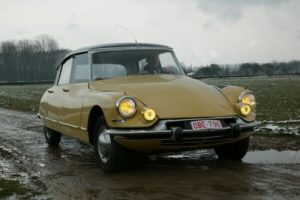
In Europe at the time, furniture designers were starting to experiment with new materials. Materials such as fibreglass, aluminium and plastic were combined with more traditional materials, such as wood, to great effect. So it was in the DS. The car featured so many new and original ideas that it immediately took auto design forward ten years. The first use of aluminium, fibreglass and plastics in a mass produced motor car.
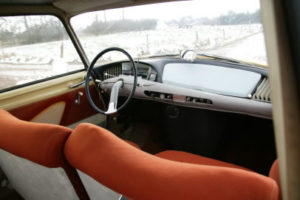
To drive a DS now 50 years after its first introduction is to ride in a car with near modern levels of ride comfort.
Today part of the appeal, besides the striking looks, of owning a DS is simply how practical they are as an everyday classic. The car will seat 5 people in great comfort, the rear passengers sitting proud of the front occupants are afforded a great view forwards as they are wafted along as if on a cloud.
A properly maintained DS is capable of starship mileages with most mechanical components being bombproof. The boot is cavernous making this an eminently suitable touring vehicle. It’s true that modern standards of noise suppression and service intervals are superior and although very few benefitted from air-conditioning, many people today do still consider them as a practical everyday mode of transport.
Buying a DS
Most people considering a DS as a classic will have recollections of seeing them in French films. Typically they will recall a black DS with a black interior, a smart combination. Understandably that is the car that most first time buyers will imagine themselves owning.
Realistically the potential owner should concern themselves with more prosaic matters such as the state of the vehicle itself and more importantly the degree of rust. Sadly these cars, while design icons, were no better built than other cars of their time. Even more sadly some of the more wonderful creations built by carrossier Henri Chapron on the platform of the DS such as the well known convertibles were even worse, built without any rudimentary rust protection.
In terms of what model to select the DS breaks down into two main model shapes: the earlier cars with upright headlights also known as frogeyes, and the later cars with the famous turning headlights.
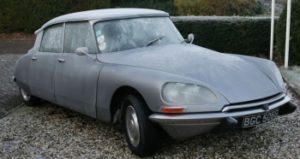
For the most part the earlier cars ran on red hydraulic fluid which many people claim makes them harder to maintain. Nevertheless they have a small yet devoted following and there is no doubt that these cars, which are now rather rare indeed, often came in stunning and unusual colour combinations with very attractive interior fabrics. They can be very rewarding to own but for most people the later cars which tend to feature larger engines and the more reliable (and non corrosive) green fluid in the hydraulic system are a more practical introduction to the marque.
Green fluid was introduced in late 1966 for the 1967 model year which was also the last year of production for the earlier front cars.
In 1968 the DS got a redesign with the new front and from then on more subtle redesigns of the exterior trim and the interior such as dashboards were introduced from 1969 and 1971. Any car from the period 1967 to 1969 will enjoy a nice combination of interior and exterior features making these cars slightly more desirable. All these cars and of course the later DSs manufactured up to 1975 will drive very well.
A good first time model would probably have a 2.1 or 2.3 litre engine (known as a 21 or a 23) and would probably be a carburettor version with a manual gearbox.
Later cars did have fuel injection and all years featured semi-automatic gearboxes which make them quite complex vehicles for the mechanical novice. Having said that the units themselves are typically very reliable so don’t reject a good solid car purely on that basis.
Whilst the DS and the later luxuriously trimmed Pallas versions were aimed at a well heeled customer, Citroën decided to introduce an economy version called the ID (or idée in French, meaning idea).
The ID also makes a sensible first time purchase being fitted with a manual gearbox and a more utilitarian standard of trim. In 1969 the IDs name was changed to D Super or D Special but the principal was the same.
The ID also formed the base for the Safari version or Break as it is known on the continent. More commonly people would call this an estate car. These cars feature 7 seats plus room for luggage and make an immensely practical load hauler with their hydraulic suspension able to cope with the heaviest load.
The Safari chassis was also used by Henri Chapron to craft on his amazing creations. The most famous of these being the decapotable (literally beheaded) or convertible.
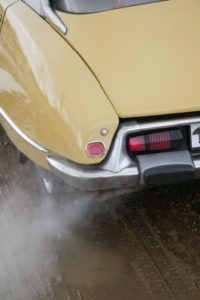
These elegant cars were made in small numbers and today are highly sought after with perhaps fewer than 15 in the UK today. Several poor copies have been made so beware if you are offered one and ensure that it is a genuine one before you hand over money.
Running a DS
As mentioned before the DS can be run as an everyday car. They cope with long journeys and high mileages very well. Service intervals at 3000 miles are short but as the 3000 mile service is just an oil change and some minor fiddling a DIYer can easily tackle it.
There is a keen network of enthusiastic specialists in the UK and the continent able to handle trickier jobs and provide maintenance and restoration.
Pretty much most components are available, certainly for the later cars with many parts being re-manufactured to support the many thousands of cars still on the road in Europe.
The D Section of the club organise regular technical weekends to give people hands on tuition on the maintenance and repair of their car. People in the club are often willing to help out and inspect a prospective purchase and of course the club will help with Insurance valuations.
The D Section is an active and enthusiastic bunch who also organise regular get-togethers and trips to the continent. Each year a DS rally is held in the early summer featuring a wide variety of these cars and forming an excellent starting point in your search for a suitable vehicle.
Owning a DS is a passport to new friends, an instant conversation opener – you will be amazed at how many people will want to admire your car. Taking a DS on a holiday trip to France is particularly enjoyable especially cruising the Routes Nationale for which the car was first designed and you will receive a very warm welcome wherever you go for the Goddess and motoring icon that is the DS.
(All photos by Hans Staartjes)


